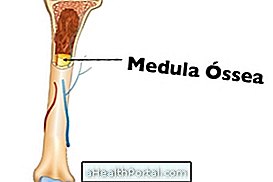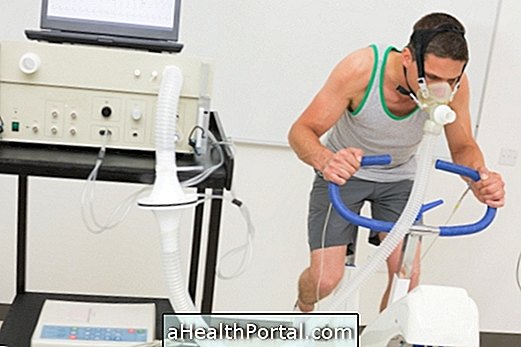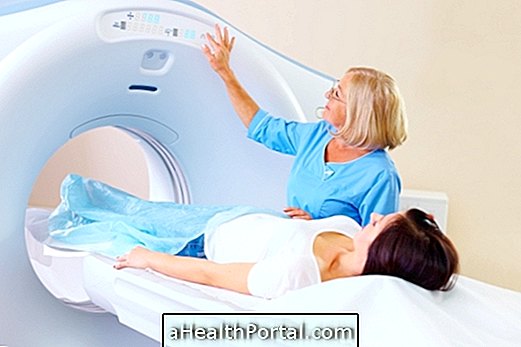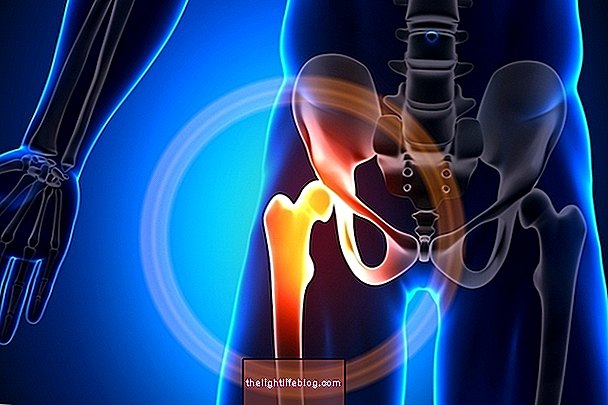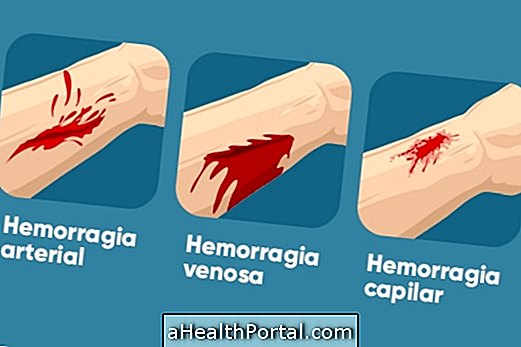Imaging tests are highly requested by physicians to aid diagnosis and to define the treatment of various diseases. However, there are currently several imaging tests that can be indicated according to the person's symptoms and characteristics and physician assessment, such as ultrasound, X-ray, computed tomography and scintigraphy. Although these exams are of image, all have different indications and applications.


1. Ultrasound
Ultrasound is a type of imaging examination that allows the visualization in real time of any organ or tissue of the body. It is the most appropriate test for pregnant women, since there is no emission of radiation, so it is not harmful to the fetus. When this test is performed with Doppler, it is possible to observe the blood flow. Understand how ultrasound is done.
The ultrasound examination can aid in the diagnosis and treatment of several situations, such as:
- Investigation of abdominal or back pain;
- Investigation of diseases involving the uterus, fallopian tubes and ovaries, such as endometriosis;
- Visualization and analysis of muscles, joints, tendons and organs such as thyroid, liver, kidneys and breast, and may be useful to check the presence of nodules or cysts.
In pregnancy, ultrasound is widely used to track the development of the fetus and identify any possible malformations, such as anencephaly and heart disease, for example. See how ultrasound is done in pregnancy.
2. X-ray
X-ray is the oldest and most widely used imaging test to identify fractures, for example, because it allows faster diagnosis because it is a simpler and cheaper examination for CT scanning, for example. In addition to the identification of fractures, the X-ray allows the identification of infections and lesions in various organs, such as the lungs.
The exam does not require preparation and the exam lasts around 10 to 15 minutes. However, because of exposure to radiation, even if small, this test is not indicated for pregnant women, mainly because the X-ray can influence the development of the fetus. In addition, children should avoid frequent X-rays, because as they are developing, radiation can interfere with bone growth, for example. Learn about the risks of x-rays in pregnancy.


3. Tomography
Tomography is an examination that uses the X-ray to obtain the image, however the device generates sequential images that allow better visualization of the organ and more accurate diagnosis. As radiation is also used, tomography should not be performed in pregnant women, and other types of imaging should be performed, such as ultrasonography.
Computed tomography is usually indicated to aid in the diagnosis of musculoskeletal and bone diseases, to check for bleeding and aneurysms, to investigate renal malformation, pancreatitis, infections and to track tumors. Learn more about what CT scans are for.
4. Scintigraphy
Scintigraphy is an imaging examination that allows the visualization of the organs and their functionality through the administration of a radioactive substance, called a radiopharmaceutical or radiotracer, which is absorbed by the organs and identified by the equipment through the radiation emitted, generating an image.
By allowing the analysis of organ function, scintigraphy is widely used in oncology to identify tumor locations and to investigate the presence of metastases, but may also be requested by the physician in other situations, such as:
- Assessment of pulmonary alterations, such as pulmonary embolism, emphysema and deformity of blood vessels, aiding in the diagnosis and treatment of these diseases. Understand what lung scintigraphy is and what it does;
- Bone evaluation , in which signs of cancer or bone metastasis are investigated, in addition to osteomyelitis, arthritis, fractures, osteonecrosis and bone infarction. See how bone scintigraphy is done;
- Identification of brain changes, mainly related to blood supply to the brain, allowing the identification and monitoring of degenerative diseases, such as Alzheimer's and Parkinson's, as well as brain tumors, stroke and confirmation of brain death. Understand how bone scintigraphy is done;
- Evaluation of kidney shape and function, from production to elimination of urine. Learn more about renal scintigraphy;
- To investigate the presence and severity of variations in cardiac function, such as ischemia and infarction, for example. Learn how to prepare for myocardial scintigraphy;
- Observe functioning and thyroid changes, such as presence of nodules, cancer, causes of hyper and hypothyroidism and inflammation in the thyroid. See how the preparation for thyroid scintigraphy is done.
Regarding oncology, the physician is usually instructed to perform a full-body scintigraphy, or PCI, that allows the identification of the primary location of breast, bladder, thyroid, and other cancers, as well as the progression of the disease and the presence of metastases. Understand how full-body scintigraphy is done and what it does.

